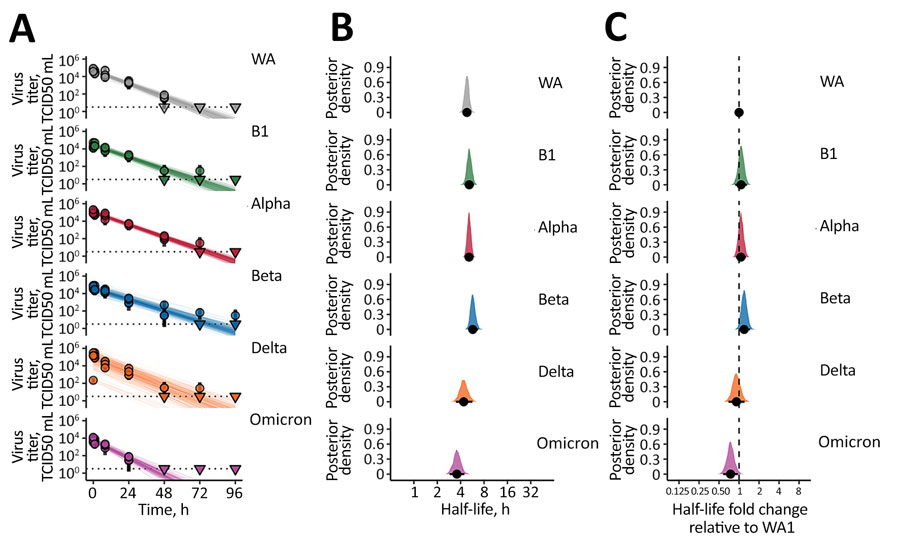Volume 29, Number 5—May 2023
Dispatch
Comparative Aerosol and Surface Stability of SARS-CoV-2 Variants of Concern
Figure 2

Figure 2. SARS-CoV-2 variant exponential decay on an inert surface and corresponding half-lives. A) Regression lines representing predicted exponential decay of log10 virus titer over time compared with measured (directly inferred) virus titers. Semitransparent lines show random draws from the joint posterior distribution of the virus exponential decay rate and the sample intercepts (virus titers at t = 0). We performed 50 random draws and then plotted 6 random initial titers per draw for each variant, yielding 300 plotted lines per variant. We chose a new group of 6 random initial titers for each new draw-variant pair. Points with black bars show individually estimated titer values (point: posterior median titer estimate; bar: 95% credible interval). Samples with no positive titration wells are plotted as triangles at the approximate LOD (dotted horizontal line). B) Inferred virus half-lives by variant, plotted on a logarithmic scale. Density plots show the shape of the posterior distribution. Dots show the posterior median half-life estimate and black lines show a 68% (thick) and 95% (thin) credible interval. C) Inferred ratio of variant virus half-lives to that of WA1 (fold-change), plotted on a logarithmic scale and centered on 1 (no change, dashed line). Dot shows the posterior median estimate and black lines show a 68% (thick) and 95% (thin) credible interval. TCID50, 50% tissue culture infectious dose.
1These authors contributed equally to this article.
2Current affiliation: Lovelace Biomedical Research Institute, Albuquerque, New Mexico, USA.